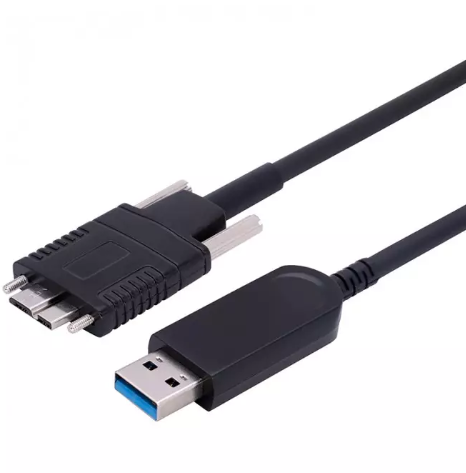The Ultimate Guide to USB Optical Cables: Everything You Need to Know
USB Optical Cables are the new-age solution for transmitting digital data at lightning speeds. This innovative product is an Active Optical Cable (AOC) designed to provide faster and more reliable data transfer for your machine vision cable applications than traditional USB cables. These cables offer numerous advantages over traditional copper cables, such as higher bandwidth, longer transmission distances, and more reliable data transmission. This comprehensive guide will explore the world of USB Cables, from their basic functionality to the technical specifications that make them the perfect choice for high-speed data transfer.
Basic Functionality of USB Optical Cables:
USB optical cables transfer data through light signals, providing faster and more reliable data transmission than traditional USB cables. Light signals ensure that data is not lost or corrupted during transfer.
Key components of a USB Optical Cable include a USB cable comprises a light source, optical fiber, and a receiver. The light source sends light signals through the optical fiber, which is then received by the receiver and converted into electrical signals that the device can read.

Differences from traditional USB cables:
Traditional USB cables transfer data through electrical signals, susceptible to interference and signal degradation. In contrast, USB cables transfer data through light signals, providing a faster and more reliable data transfer. Additionally, USB cables are typically more durable and have a longer lifespan than traditional USB cables.
Technical Specifications of USB Optical Cables:
◆ Meet USB 3.1 Gen2 Standard , bandwidth can reach to 10Gbps super speed;
◆ Support length up to 15m .(Custom length is available);
◆ Support 5V 900mA max;
◆ Support two sides plug and play on type C connector;
◆ Do support downward compatible with USB2.0/1.1;
◆ No RF interference , working stable in complex environments.
USB cables typically have a bandwidth of up to 10Gbps, allowing for high-speed data transmission. It makes them ideal for machine vision cable applications where large amounts of data need to be transferred quickly. The transmission distance of USB cables is significantly greater than traditional USB cables, often reaching distances of up to 100 meters. This makes them ideal for use in applications with long cable lengths, such as machine vision cable systems with multiple cameras. USB cables provide highly reliable data transmission due to the use of light signals. The light signals are immune to electromagnetic interference, ensuring that data is not lost or corrupted during transfer. USB cables consume very little power, making them ideal for portable or battery-powered devices. The low power consumption of USB cables also helps to reduce heat generated during data transfer, ensuring that they are reliable and durable in demanding machine vision cable applications.
Applications of USB Optical Cables:
● In machine vision cable systems, USB cables transfer high-quality data from cameras to processing units.
● USB cables are used in gaming systems to transfer data from gaming devices to a computer or console.
● In broadcasting applications, USB cables transfer high-quality video resolution of 4K Ultra HD (3840-2160 at 60 Hz) and audio data from cameras and microphones to recording and playback devices.
● USB cables are used in various consumer electronics and computer devices, such as external hard drives, printers, and other peripherals.
Conclusion:
USB optical cables are advanced optical cable (AOC) products that offer faster, more reliable data transfer than traditional USB cables and a length of up to 100 meters. Smartavlink is the best USB optical cable (AOC) product and service provider. With numerous applications, these cables have become a popular choice for machine vision, medical imaging, and other industries. Contact Smartavlink for more information and to purchase USB cables.
